► We ride in the 2016 Mk2 Porsche Panamera
► Get the inside track on its tech and specs
► Nine things you need to know
1. Yep, it’s quick
There’s only so much to be gleaned from a passenger ride, but a couple of laps around the Lausitzring did reveal a few things about the Panamera Turbo. Firstly, this is a massively composed chassis for such a big car, and it feels very rear-biased but with masses of grip and traction – you could feel our professional driver getting on the power incredibly early, and the front end didn’t seem the least bit interested in understeering.
Secondly, of course, it goes like scheisse off a shovel with 542bhp but it also seems very responsive with no discernible lag (from the passenger seat, remember), revs very keenly and sounds significantly better than before – it manages to retains a lot of V8 character, despite the presence of twin turbochargers.
Thirdly, you need the carbon ceramics if you do any track driving (which no one will). Our car was on the standard brakes, had already done a day’s worth of passenger laps, and the discs were grumbling like Alf Garnett.
2. The bodyshell is 40kg lighter
The Panamera uses the VW Group’s new modular MSB platform – which Porsche developed – and it will be made in Leipzig. Porsche claims every component is new. There are three under-the-skin building blocks: front, middle and rear. The middle section is key to providing different wheelbases, and being used across the group. A long wheelbase Panamera will, however, come to Europe this time. As standard, the wheelbase is 30mm longer than before, with the long ’un providing an extra 150mm between the wheels.
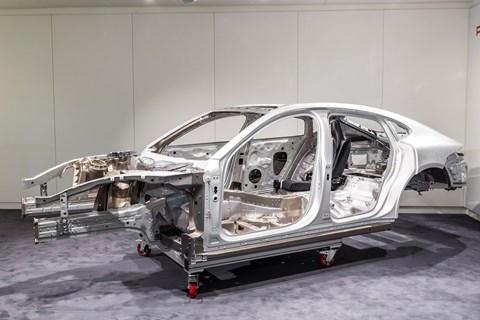
The bodyshell is manufactured from a multi-material mix of aluminium and steel. For example, all exterior panels are now aluminium, with the edges of the sidewall (i.e. side of the bodyshell, not the doors or front wings) rolled neatly and glued to the steel structure beneath – a bit like folding over the edge of a Cornish pasty; it can’t be riveted, reputedly because of complications caused by the high-strength steel underneath. The aluminium roof is laser-welded to the sidewall.
The floor panel and the entire front end is formed purely from aluminium (the previous model’s front end was aluminium only ahead of the suspension struts), while high-strength steels are used in key areas for crash performance and rigidity. The high-strength boron steel for the cross-member is heated to 950 degrees C, inserted into cavities, then cooled as a pressure of 500 bar is applied to it – making it tremendously strong. The transmission tunnel is also made from extremely high-strength steel.
The body-in-white weighs 335kg, contributing 40kg to the Panamera’s 70kg overall saving compared with its predecessor. It’s also 5% stiffer.
3. All the launch engines are new
The Panamera launches in Turbo, 4S and 4S Diesel forms, and all features new engines combined with all-wheel drive – though rear-drive models will be offered later.
The Turbo gets a 4.0-litre V8 with 542bhp from 5750-6000rpm, and 568lb ft from 1960-4500rpm. Like all Panamera engines, the Turbo’s twin-scroll turbochargers nestle compactly in the centre of the 90-degree vee. A 4.0-litre twin-turbo V8 might sound familiar from the VW Group, but this is not the Audi RS6 engine – it’s all new. In fact, this engine will go in the next RS6.
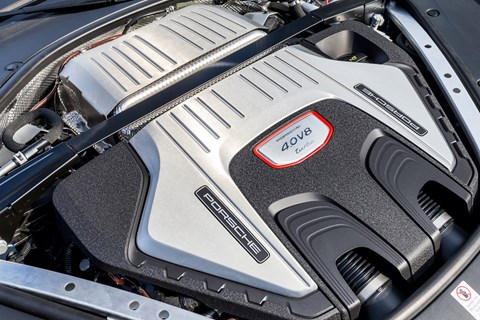
Cylinder deactivation is also featured in the Turbo version. It uses sliding cam elements with a twin-pin actuator, stopping the valves from letting air into cylinders. With the direct-injection system cut off at the same time, four of the eight combustion chambers stop pumping.
The 4S gets a 2.9-litre, 90-degree, twin-turbo V6. It makes 434bhp at 5650rpm and 406lb ft from 1750-5500rpm. The 4S Diesel, meanwhile, gets a chunky 4.0-litre V8 for the first time – it was ‘just’ an Audi-sourced six last time. It provides 416bhp from 3500 to 5500rpm, 627lb ft from 1000 to 3250rpm.
The V8 engines’ cylinders have a kind of grooved spiral surface, the aluminium milled back 60 micrometres at set intervals. An iron-coating is plasma sprayed onto these grooves. It’s just 150 micrometres thick, but reduces friction for better efficiency. It’s partly why oil consumption is claimed to be reduced by up to 50 per cent.
Not only is the Turbo V8 9.5kg lighter and the V6 14kg lighter than previous iterations, but the front axle also moves further forward. So, while the engines remain in the same place, their mass is effectively further back in the chassis – and that should translate to sharper handling.
4. The 8-speed PDK shifts as rapidly as a GT3
The old Panamera got either a 7-speed dual-clutch gearbox, an eight-speed auto paired with the hybrid and diesel engines, or a six-speed manual. This time, all derivatives get a ZF eight-speed dual-clutch transmission. It weighs 7kg more than the seven-speeder, but the internals are 142mm shorter than before, and allows for hybrid componentry to be combined in the housing without lengthening the powertrain package.

Precise oil-spray lubrication is employed for each of the four shafts, reducing drag. The previous maximum torque rating of 553lb ft increases to 737lb ft. No exact shift times are quoted, but engineers say they targeted – and achieved – times on a par with the latest GT3 model, meaning sub-100ms. Shift speeds are the same across the range, from diesel models to the Turbo. It’s described as a 6+2 transmission: top speed is achieved in sixth gear, with seventh and eighth for low-rpm cruising.
Nope, there’s no six-speed manual this time.
5. The infotainment system gets a shake-up
The old Panamera’s centre console was a sea of buttons, something Porsche has radically cleaned up on its successor with a new system called Porsche Advanced Cockpit. The central analogue rev counter remains in the dash (a Porsche trademark that remains even when everything’s switched off), but the two dials either side are replaced with 7-in TFT screens. Meanwhile, the central touchscreen now measures 12.3 inches.
When your hand approaches the central screen, the menu at its left immediately appears. You can either navigate around by pressing the options, or by using an easily missed rotary dial just ahead of the gear shifter. There’s also a choice of ‘hard’ buttons on the centre console (Source, Media, Apps, Phone etc).
These buttons are actually capacitive glass, rather than physical switches – and they provide access to the Porsche’s suspension modes, de-misting the windscreen and so on. This black glass gets quickly covered in fingerprints, however, and we sometimes had to press the buttons a couple of times to trigger activation.
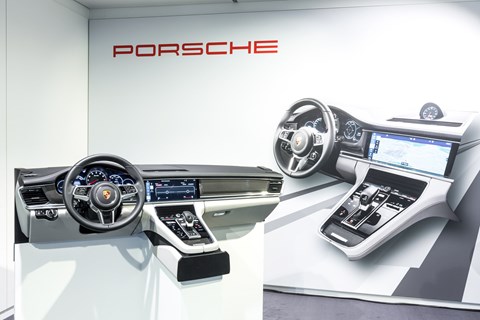
I found the infotainment generally intuitive, though I’m not so sure about the interface for the central air vent. You have to press a ‘climate’ capacitive button to control it via a touchscreen, sliding digital controls back and forth to change the airflow. It’s unintuitive, and requires more eyes-off-the-road time.
You can hook up six Wi-Fi-enabled devices, and Connect Plus is standard. This features navigation with real-time traffic plus Google Earth/Street View, Apple CarPlay, and a smartphone tray that increases signal strength and battery life. It also includes apps for news, flight/train info, weather, parking places and fuel prices. No matter how accomplished it is, it’s actually a baffling amount of stuff to fathom, and I wonder how many buyers actually will.
6. The seats are lower and lighter
The seats don’t just look cool with their integrated headrests, they’re also 8kg lighter in total, too (i.e. the combined saving of all seats). The structures are 6.18kg lighter, the motors 1.82kg lighter. You also sit lower in the car, with the H-point (the pivot-point in your hips) in both front and rear seats 10mm lower. This helps to offset the 20mm lower and sleeker roofline, and makes for a more sporty-feeling driving position. There’s plenty of knee- and headroom in the back if you’re over six feet tall.
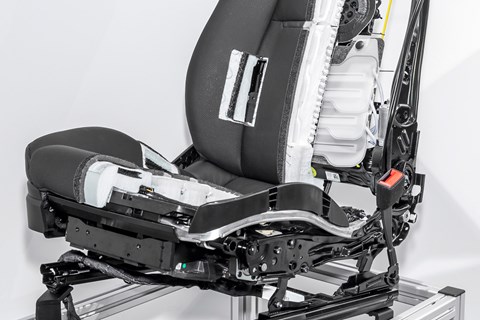
The front seats are 18-way adjustable with four-way lumbar support. Ten-chamber pressure massage is offered as an option, with five different levels of intensity. The rears are 8-way adjustable, with three degrees more backrest adjustment.
7. It promises limo comfort with sports car handling
The Turbo and Turbo S models get a new three-chamber air suspension system as standard (up from two chambers previously), which is optional on other derivatives. The three chambers are connected by two valves, allowing in 4.1 litres of air, which Porsche claims is the largest volume in the class. But Porsche also promises a wider spread between comfort, normal and sports modes than ever before, with 14Nm required to compress the air springs in comfort, 23Nm in normal and 36Nm in the sportiest setting.
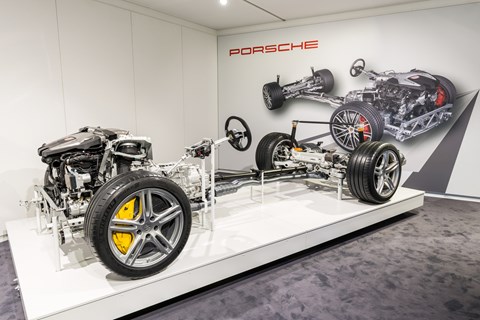
The result, it’s claimed, allows the driver to choose everything from good ride comfort to the kind of control and precision required to lap the Nürburgring in just 7min 38sec – depending on the model, the Panamera is 8-10sec faster than its predecessor around the Green Hell.
You can also choose from three ride heights, with lift mode available at up to 18mph.
8. The cruise control isn’t just active, it’s predictive
Porsche calls its latest cruise control system InnoDrive. Like last time, it can adjust your pre-set maximum speed to flow with traffic. But the predictive stuff is new for Porsche: it looks at your sat-nav to take account of inclines, bends, speed limits and more, making sure the correct gear, engine speed and braking pressure is selected in time, rather than reacting to conditions.

And this time, instead of a Cyclops sensor scanning for traffic ahead, there are two positioned like fog lights either side – allowing for easier identification of motorbikes splitting lanes.
9. Rear-wheel steering is optional
Just like the 911 GT3, the Panamera is now offered with rear-wheel steering (standard on GT3, optional here). At low speeds, the wheels turn in the opposite direction to the fronts, like a forklift truck (Porsche didn’t say this). It means the Panamera is effectively shorter, and therefore more manoeuvrable.
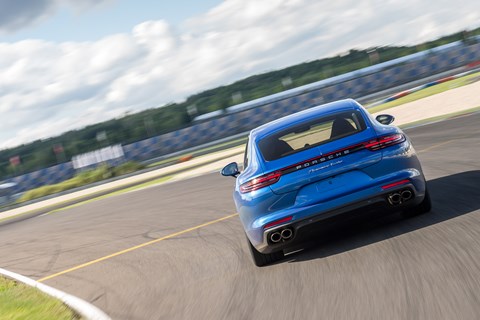
At higher speeds, the rear wheels turn in the same direction as the fronts. This increases rear-axle response time (i.e. it’s keener to follow the front tyres) and increases stability by effectively lengthening the wheelbase.
Read our Porsche Panamera first ride here
2016 Porsche Panamera: the vital statistics
Porsche Panamera 4S
Engine 2894cc 24v twin-turbo V6 petrol, 434bhp @ 5650-6600rpm, 406lb ft 1750-5500rpm
Transmission Eight-speed dual-clutch, all-wheel drive
Performance 4.0sec 0-60mph, 181mph, 34mpg, 186g/km CO2
How heavy/made of 1795kg, steel/aluminium
How big (L/W/H) 5049/1937/1423mm

Porsche Panamera 4S Diesel
Engine 3956cc 32v twin-turbo V8 diesel, 416bhp @ 3500-5000rpm, 627lb ft @ 1000-3250rpm
Transmission Eight-speed dual-clutch, all-wheel drive
Performance 4.3sec 0-60mph, 178mph, 42mpg, 178g/km CO2
How heavy/made of 1975kg, steel/aluminium,
How big (L/W/H) 5049/1937/1423mm

Porsche Panamera Turbo
Engine 3996cc 32v twin-turbo V8 petrol, 542bhp @ 5750-6000rpm, 568lb ft @ 1960-4500rpm
Transmission Eight-speed dual-clutch, all-wheel drive
Performance 3.6sec 0-60mph, 191mph, 30mpg, 214g/km CO2
How heavy/made of 1920kg, steel/aluminium
How big (L/W/H) 5049/1937/1427mm
Read more Porsche reviews here